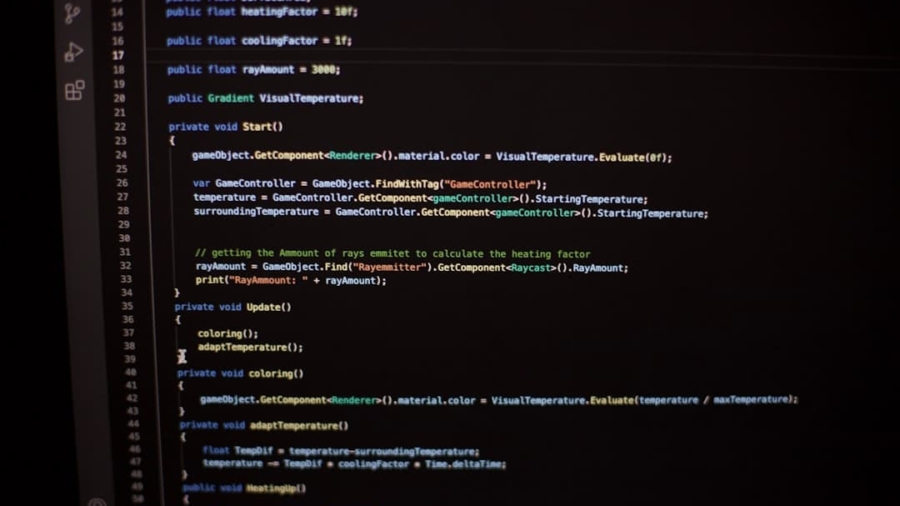Secure coding standards are a set of guidelines and best practices designed to help developers create software that is resistant to vulnerabilities and attacks. These standards encompass a wide range of topics, including input validation, authentication, error handling, and data protection. By adhering to these guidelines, developers can significantly reduce the risk of security breaches and ensure that their applications are robust against various threats.
The importance of secure coding cannot be overstated, especially in an era where cyber threats are increasingly sophisticated and prevalent. The origins of secure coding standards can be traced back to the early days of software development when the need for security became apparent as systems began to be targeted by malicious actors. Organizations such as the Open Web Application Security Project (OWASP) have played a pivotal role in establishing widely accepted secure coding practices.
OWASP’s Top Ten list, for instance, highlights the most critical security risks to web applications, providing developers with a clear framework to address these vulnerabilities. Understanding these standards is essential for any developer aiming to build secure applications, as they provide a foundation upon which secure software can be constructed.
Key Takeaways
- Secure coding standards are essential guidelines for writing secure and resilient code, helping to prevent vulnerabilities and security breaches.
- Implementing secure coding standards in DevSecOps ensures that security is integrated into the development process from the beginning, reducing the risk of security flaws.
- The benefits of secure coding standards in DevSecOps include improved code quality, reduced security vulnerabilities, and increased overall security posture.
- Challenges of adhering to secure coding standards include resistance from developers, lack of awareness, and the need for continuous monitoring and enforcement.
- Best practices for integrating secure coding standards in DevSecOps include conducting regular code reviews, using automated security testing tools, and providing ongoing training and education for development teams.
Implementing Secure Coding Standards in DevSecOps
Integrating secure coding standards into a DevSecOps framework requires a cultural shift within development teams. DevSecOps emphasizes the importance of security at every stage of the software development lifecycle (SDLC), from planning and design to deployment and maintenance. This approach necessitates that developers not only understand secure coding practices but also actively apply them throughout their work.
To achieve this, organizations must foster an environment where security is viewed as a shared responsibility rather than a separate function. One effective strategy for implementing secure coding standards in DevSecOps is through the use of automated tools that can analyze code for vulnerabilities in real-time. These tools can be integrated into continuous integration/continuous deployment (CI/CD) pipelines, allowing developers to receive immediate feedback on their code’s security posture.
Additionally, incorporating security reviews and threat modeling sessions into the development process can help teams identify potential vulnerabilities early on, reducing the likelihood of costly fixes later in the SDLBy embedding security into the development process, organizations can create a more resilient software product while also instilling a security-first mindset among their teams.
Benefits of Secure Coding Standards in DevSecOps
The adoption of secure coding standards within a DevSecOps framework offers numerous benefits that extend beyond mere compliance with regulations. One of the most significant advantages is the reduction in security vulnerabilities, which directly translates to lower risks of data breaches and associated costs. By proactively addressing security concerns during development, organizations can avoid the financial repercussions of post-deployment vulnerabilities, which can include fines, legal fees, and damage to reputation.
Moreover, secure coding standards enhance collaboration between development, security, and operations teams. When all stakeholders are aligned on security best practices, it fosters a culture of shared responsibility and accountability. This collaboration not only improves the overall quality of the software but also accelerates the development process by minimizing the need for extensive rework due to security issues.
As a result, organizations can deliver products to market faster while maintaining a high level of security assurance.
Challenges of Adhering to Secure Coding Standards
Despite the clear benefits of adhering to secure coding standards, organizations often face several challenges in their implementation. One major hurdle is the lack of awareness and understanding among developers regarding these standards. Many developers may not have received formal training in secure coding practices or may not be familiar with the latest threats and vulnerabilities.
This knowledge gap can lead to unintentional oversights that compromise application security. Another challenge is the potential resistance to change within development teams. Developers are often under pressure to deliver features quickly, which can lead to shortcuts being taken in the name of expediency.
Integrating secure coding standards into existing workflows may be perceived as an additional burden rather than a necessary enhancement. To overcome this resistance, organizations must emphasize the long-term benefits of secure coding practices and provide adequate support and resources to facilitate their adoption.
Best Practices for Integrating Secure Coding Standards in DevSecOps
To effectively integrate secure coding standards into a DevSecOps environment, organizations should adopt several best practices that promote security awareness and compliance among development teams. First and foremost, establishing clear communication channels between development, security, and operations teams is essential. Regular meetings and collaborative sessions can help ensure that all stakeholders are on the same page regarding security expectations and requirements.
Additionally, organizations should prioritize ongoing training and education for their development teams. This can include workshops, online courses, and hands-on training sessions focused on secure coding practices and emerging threats. By investing in continuous learning opportunities, organizations can empower their developers to stay informed about the latest security trends and best practices.
Peer reviews can help identify potential vulnerabilities before code is merged into production, fostering a culture of accountability and vigilance among developers. Furthermore, leveraging automated tools for static code analysis can streamline this process by providing immediate feedback on code quality and security issues.
Tools and Technologies for Enforcing Secure Coding Standards
A variety of tools and technologies are available to assist organizations in enforcing secure coding standards within their DevSecOps practices. Static application security testing (SAST) tools analyze source code for vulnerabilities without executing it, allowing developers to identify issues early in the development process. These tools can be integrated into CI/CD pipelines to provide real-time feedback on code changes.
Dynamic application security testing (DAST) tools complement SAST by testing running applications for vulnerabilities during runtime. This approach helps identify issues that may not be apparent in static code analysis, such as configuration errors or runtime vulnerabilities. By employing both SAST and DAST tools, organizations can achieve comprehensive coverage of their applications’ security posture.
Additionally, software composition analysis (SCA) tools are essential for managing third-party libraries and dependencies. These tools scan open-source components for known vulnerabilities and license compliance issues, ensuring that developers are aware of any risks associated with external code they incorporate into their applications. By utilizing these tools effectively, organizations can create a more secure software development environment while adhering to established coding standards.
Training and Education on Secure Coding Standards for DevSecOps Teams
Training and education play a crucial role in ensuring that DevSecOps teams are well-versed in secure coding standards. Organizations should develop comprehensive training programs that cover both foundational concepts and advanced topics related to application security. These programs should be tailored to meet the specific needs of different team members, from junior developers to senior architects.
Hands-on training sessions that simulate real-world scenarios can be particularly effective in reinforcing secure coding practices. For example, conducting capture-the-flag (CTF) exercises allows developers to practice identifying and mitigating vulnerabilities in a controlled environment. Such interactive learning experiences not only enhance knowledge retention but also foster teamwork and collaboration among team members.
Furthermore, organizations should encourage participation in industry conferences, workshops, and webinars focused on application security. These events provide valuable opportunities for networking with peers and learning about the latest trends and best practices in secure coding. By fostering a culture of continuous learning and professional development, organizations can ensure that their DevSecOps teams remain equipped to tackle evolving security challenges.
Future Trends in Secure Coding Standards for DevSecOps
As technology continues to evolve at a rapid pace, so too will the landscape of secure coding standards within DevSecOps frameworks. One emerging trend is the increasing emphasis on automation in security processes. As artificial intelligence (AI) and machine learning (ML) technologies advance, they will play a more significant role in identifying vulnerabilities and suggesting remediation strategies based on historical data patterns.
Another trend is the growing focus on supply chain security as organizations increasingly rely on third-party components and services. Secure coding standards will need to adapt to address risks associated with open-source libraries and dependencies more effectively. This may involve stricter guidelines for vetting third-party code and implementing robust monitoring mechanisms to detect vulnerabilities as they arise.
Finally, as regulatory requirements surrounding data protection become more stringent globally, secure coding standards will likely evolve to incorporate compliance considerations more explicitly. Organizations will need to ensure that their development practices align with regulations such as GDPR or CCPA while maintaining robust security measures throughout their software development lifecycle. In summary, understanding and implementing secure coding standards within a DevSecOps framework is essential for building resilient software applications capable of withstanding modern cyber threats.
By addressing challenges through best practices, leveraging appropriate tools, investing in training, and staying attuned to future trends, organizations can create a culture of security that permeates every aspect of their development processes.
In addition to understanding the importance of secure coding standards in DevSecOps, it is also crucial to stay updated on the latest technology trends. One related article worth checking out is The Top 5 Smartwatches of 2023, which highlights the top smartwatches available in the market. Keeping abreast of the best technology tools and devices can enhance the overall efficiency and security of software development processes.
FAQs
What are secure coding standards?
Secure coding standards are a set of guidelines and best practices that developers follow to write secure and resilient code. These standards help in identifying and mitigating security vulnerabilities in software applications.
What is DevSecOps?
DevSecOps is a software development approach that integrates security practices within the DevOps process. It aims to incorporate security measures and considerations at every stage of the software development lifecycle, from design and development to testing and deployment.
How do secure coding standards contribute to DevSecOps?
Secure coding standards play a crucial role in DevSecOps by ensuring that security is ingrained in the development process. By following these standards, developers can proactively address security issues, reduce the likelihood of vulnerabilities, and enhance the overall security posture of the software.
What are some common secure coding standards?
Common secure coding standards include guidelines for input validation, output encoding, authentication and authorization, error handling, secure communication, and data protection. These standards are often based on industry best practices and security principles.
Why are secure coding standards important in DevSecOps?
Secure coding standards are important in DevSecOps because they help in building secure and resilient software applications. By adhering to these standards, organizations can minimize the risk of security breaches, protect sensitive data, and maintain the trust of their customers and stakeholders.



